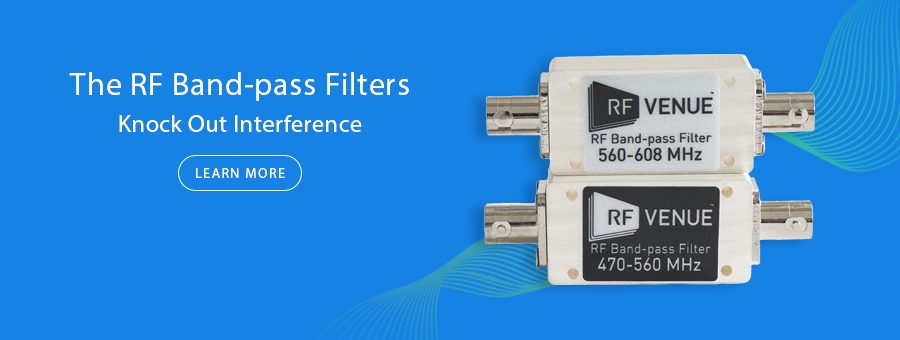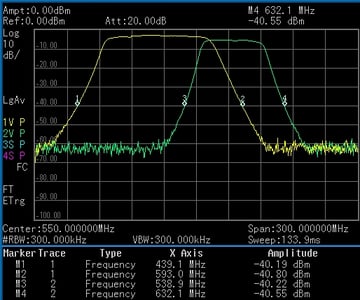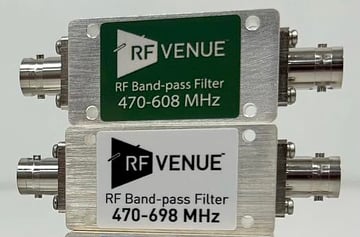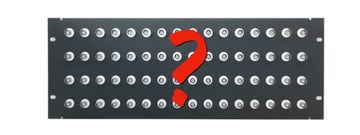- Products
- All Products
- RF PA Extension Kit
- Wireless Microphone Upgrade Packs
- In-Ear Monitor Upgrade Packs
- Wireless Microphone Antennas
- Wireless In-Ear Monitor Antennas
- Antenna Distribution for Microphones
- Antenna Combiners for In-Ear Monitors
- Multi-Zone Antenna Combiners
- Spectrum Tools
- Accessories, Cables and Parts
- Solutions by Venue
- Resources & Training
- Performance Tools
- About Us
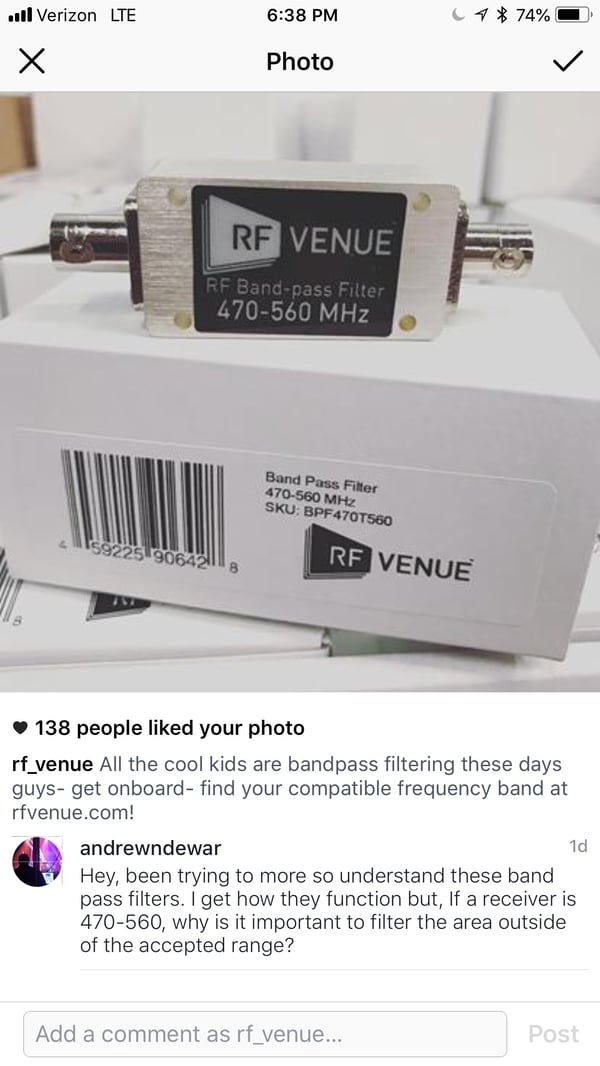
We received the above question recently on Instagram. (Shameless plug: follow us @RFvenue and tag your project pics #RFvenue) The question was prompted from our Bandpass Filters Are Your New Friends blog we recently posted. Check it out if you haven’t already done so, but I wanted to offer an analogy here in a new post to hopefully make filtering RF with these tools a bit clearer, so here goes:
You check into a hotel room and are trying to get some sleep. No noise is coming from within the four walls of the room except your own snoring, but down the hall a dog is barking and there are three toddlers in the room next door making all kinds of noise. As soon as you begin to drift off, the dog starts up again, and so does the whining.
The bandpass filter can’t fix your snoring, but it will get rid of the dog and noise from the kiddos. Bandpass filters are SELECTIVE and have a “shape” much like a box. They come in fixed and tunable ranges- we have ours fixed just right for the relevant frequencies for wireless mics so they're good to go out of the box. Anything inside the filter envelope is not touched, but anything outside is unwanted and rejected by 40 dB:
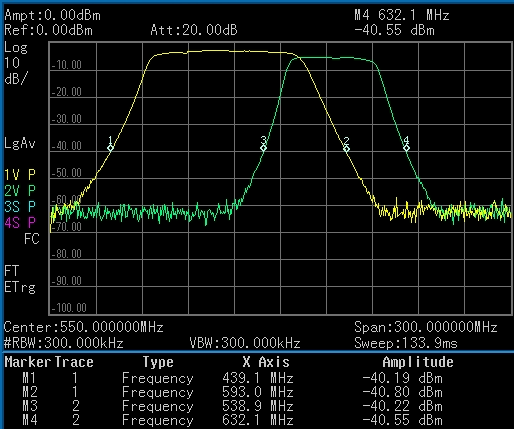
470 - 560 and 560 - 608 MHz Bandpass filter envelopes
In this analogy the four walls of your hotel represent the stated frequency range of your receiver. And just like in your hotel room, some things you don’t want to hear get inside… in this case the dog and the loud kids.
Why don’t receivers already take care of all that? For the same reason the hotel doesn’t make your walls totally soundproof, cost!
High performance bandpass filters from RF Venue are reasonably priced and we make them easy to match your wireless mic receiver frequency bands to keep out the dogs and the other nuisance signals.
At the recent InfoComm show we shot these scans showing how our 470-560 MHz Bandpass Filter can help keep you out of trouble in a hostile RF environment like a trade show. Here are the before and after shots.
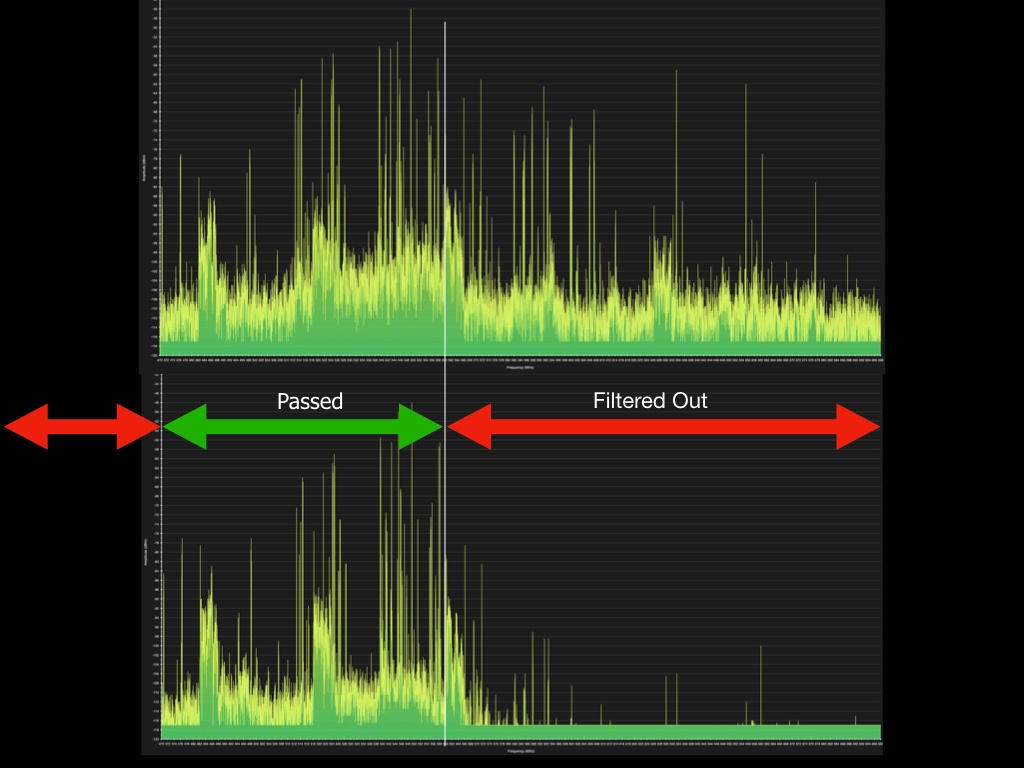
Unfortunately I wasn't including the frequencies below 470 MHz in the original scan range, but note that you will receive the same benefit below that frequency as we did above the top of our bandpass range at 560 MHz.
So getting back to the original question as to why additional filtering is necessary when receivers already have their own filtering ...
Below we have the bandpass range side to side. You can see that in this case adding the additional RF Venue bandpass filters will give you an approximate 12 dB reduction in the overall noise floor. Looking at it this way it's easy to see how out of band interference affects your band of interest. With T-Mobile lighting up the 600 MHz band in the US, expect more out of band noise coming to a venue near you.
So if you're looking to maximize performance for any brand wireless mic system, bandpass filtering is the way to go- just put them in-line between your antennas and antenna distro unit and voila:
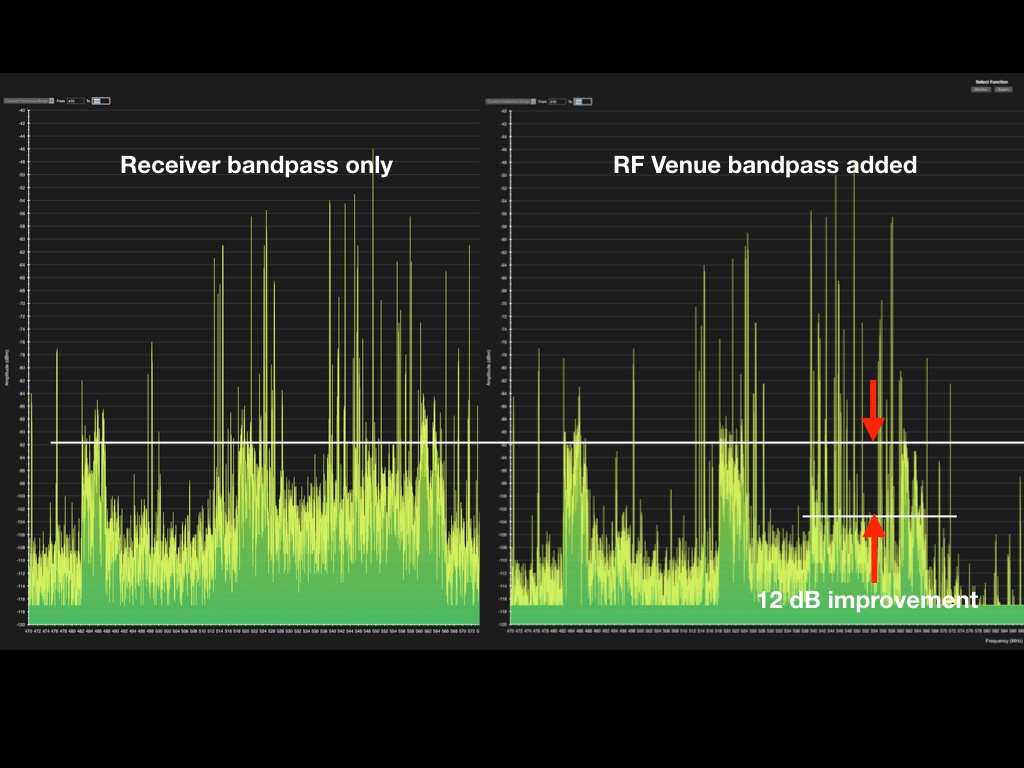
Don Boomer
Don Boomer is Senior applications engineer at RF Venue. He has worked in R&D in the past for Peavey, Sabine and Line 6 and his rock band from his high school days has a song in the Rock n Roll Hall of Fame
More from the blog
Subscribe to email updates
Stay up-to-date on what's happening at this blog and get additional content about the benefits of subscribing.

